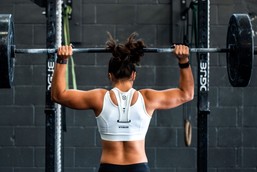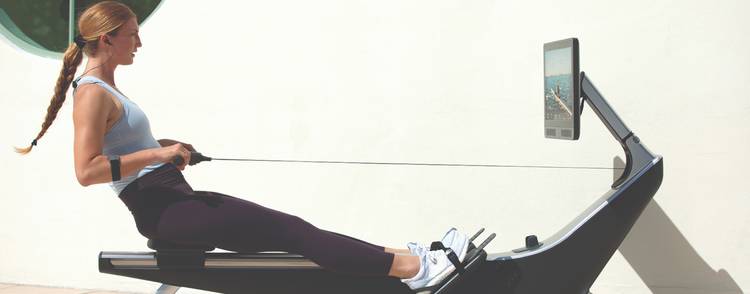What is the difference between an Olympic Barbell and a Standard Barbell?
Okay, so you’re probably thinking, “is there really a huge difference between barbells?” Well, as surprised as you may be, there are some things that are unique for both types of bars. It’s important to ensure you are purchasing and using the right barbell. If you are ever confused, visit one of our 3 locations so our Fitness Town Experts can assist you. Throughout this post, I will highlight the major differences between an Olympic bar and a standard bar, their functions and overall designs.
First, if you’re a bit unsure of what I’m talking about, let me take a step backwards. So, what is a barbell? Barbells are long, straight metal bars that you use as resistance for strength-training exercises. With a barbell, you can do exercises, including squats, deadlifts, presses, rows and curls.

Barbells Function
When it comes down to it, Olympic barbells are longer and heavier than regular powerlifting barbells. Most gyms and commercial fitness centers have Olympic barbells because they hold more weight and are more durable than regular barbells. In comparison to the Olympic barbells, standard barbells are shorter and lighter. Standard barbells take up less space and are easier to manage. However, many people prefer the Olympic bars to their standard counterparts based on quality, function and numerous other reasons.
Let’s Get Technical – Olympic Barbells
You may not immediately see the differences between a standard barbell and an Olympic barbell. At Fitness Town, we have several barbells to meet your fitness needs and goals. Olympic barbells are 7 feet long and will weigh 45 lbs. Typically the thickness or diameter of the bars can fluctuate depending on the manufacturer or style. The difference in diameter will affect the bar’s maximum weight capabilities. The amount of weight an Olympic barbell can hold varies, but most of our bars at Fitness Town have between a 600lbs and 1,500lbs load capacity.

Another big feature that Olympic bars have going for them is their bearings. You need a dependable sleeve rotation from your bearings/bushings with a modest amount of bar whip for most exercises. Unfortunately, your standard power-lifting bars do not offer this feature. Barbells’ ability to whip (store elastic energy) can be very useful to an athlete. Most Olympic barbells have centre knurling, which can distinguish it from other bars. For the CrossFit athlete, this can be a pain sometimes – literally! When lifting the bar, it can definitely irritate your neck area. IWF-certified Olympic bars have the centre knurl. However, companies are starting to leave the centre, knurling off on some non-competition Olympic bars. Many people find that serves no purpose, and since it can be uncomfortable, it makes sense to be accommodating.
Let’s Get Technical – Standard Weightlifting Barbells
Standard barbells are 5 to 6 feet long and weigh between 15 to 25 lbs. Most regular barbells have a load capacity of 100 to 200 lbs. Again, the diameter can fluctuate, which will determine the weight capacity it can handle. Power-lifting barbells do not have any bearings or bushes. These bars, along with some Olympic barbells, have the centre knurling primarily for the back squat. The reason for having the centre knurling is so that it prevents the bar from sliding down the back during heavy lifts.
Let’s Get Technical – Women and Junior Barbells
Some manufacturers have also created dedicated barbells for women and youth. The reasoning for this is that when it comes to fitness, we are all a little different. These bars are dedicated to the needs of those who may be looking for something smaller or lighter.



